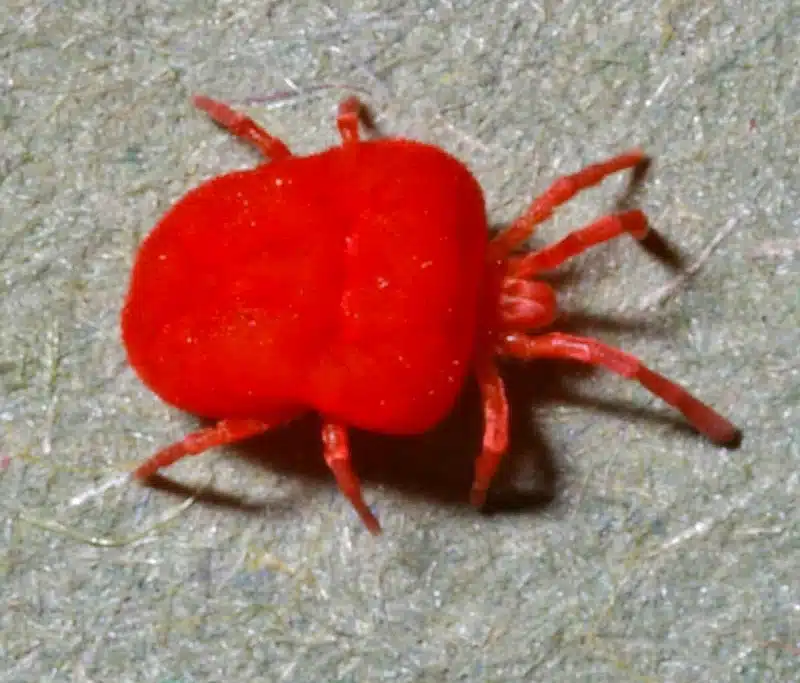Concrete mites can show up on sun-heated patios, sidewalks, and stone walls. These tiny red critters often appear in spring and fall.
I’m a registered technician with four years in pest control. Our family’s third-generation business has served the DMV area for over 50 years.
What Are Concrete Mites? Taxonomy & Common Names
Concrete mites belong to the genus Balaustium in the family Erythraeidae. You may hear them called sidewalk mites, red velvet mites, or pollen mites. Unlike some relatives, all stages are free-living predators.
What Concrete Mites Look Like: Tiny Red Arachnids
Size, Color, and Appearance of These Tiny Red Bugs
Adults reach about 1-2 mm long. They shine in bright red to orange. Under a magnifier, fine hairs give them a velvet look.
Eye Position & Leg Arrangement of These Tiny Arachnids
Adults have eight legs, while newly hatched larvae show six. Lateral eyes sit far back, leaving a gap between the second and third leg pairs.
Movement & Behavior on Sun-Warmed Surfaces
These mites dart quickly across sun-warmed concrete. You’ll spot them most often by mid-morning on sunny days.
Concrete Mites vs. Look-Alike Species
Clover Mites vs. Concrete Mites
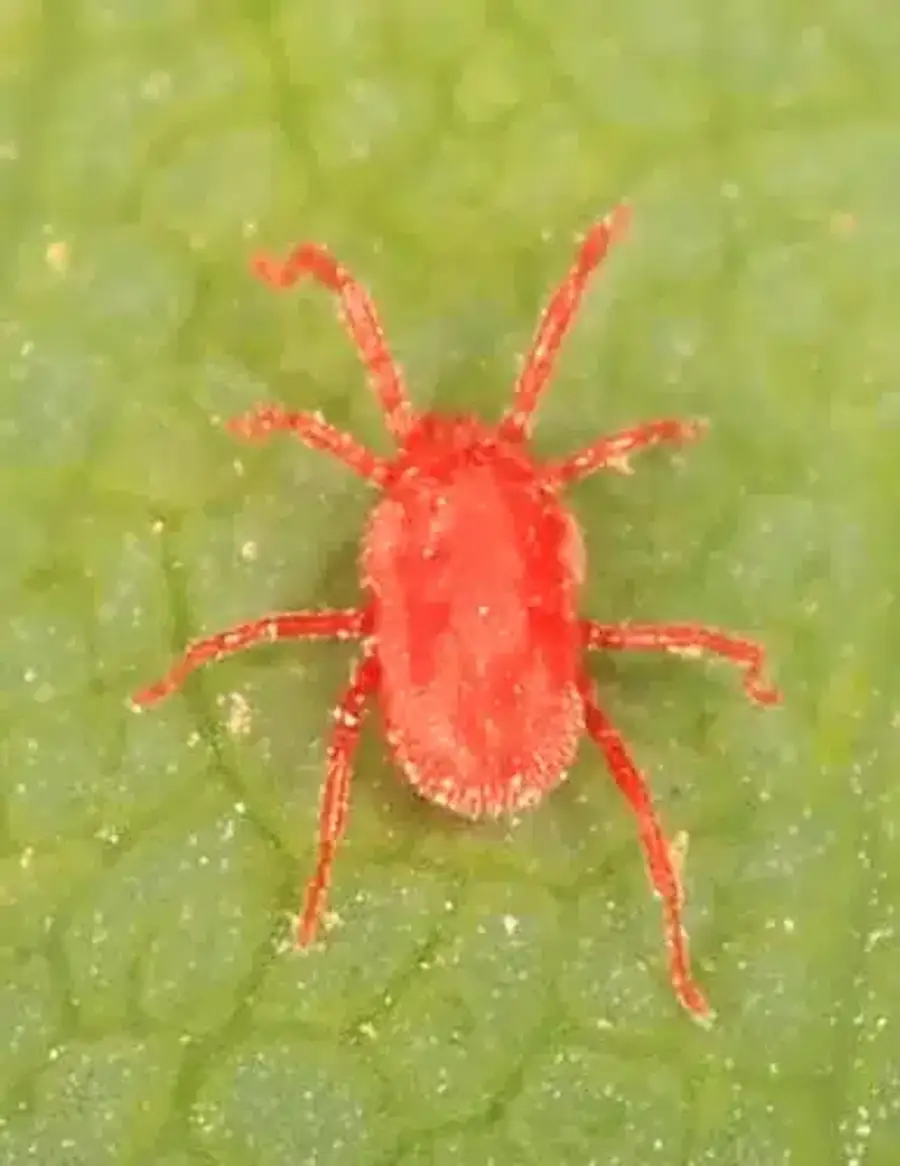

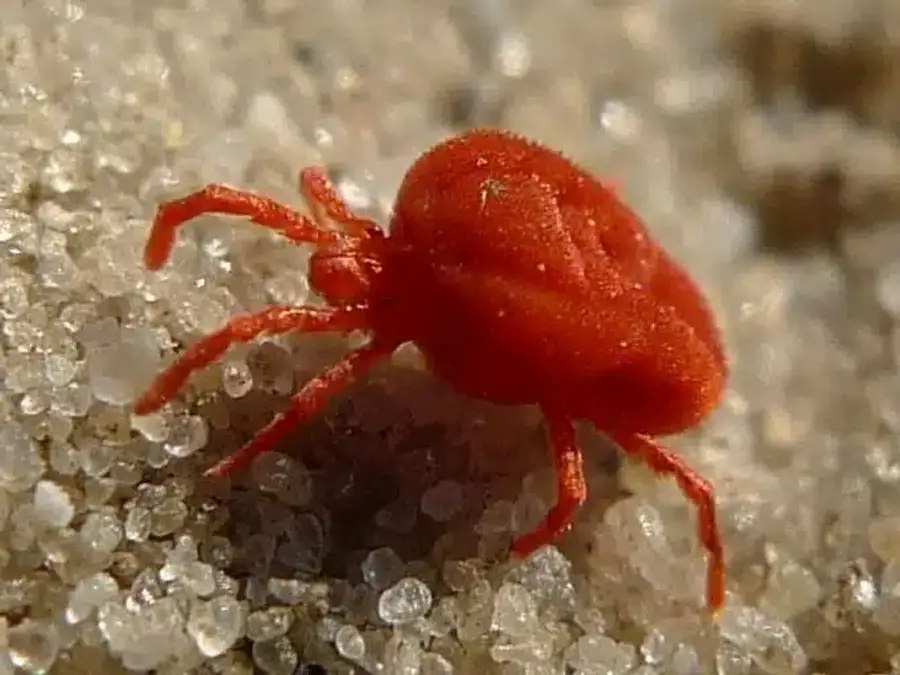
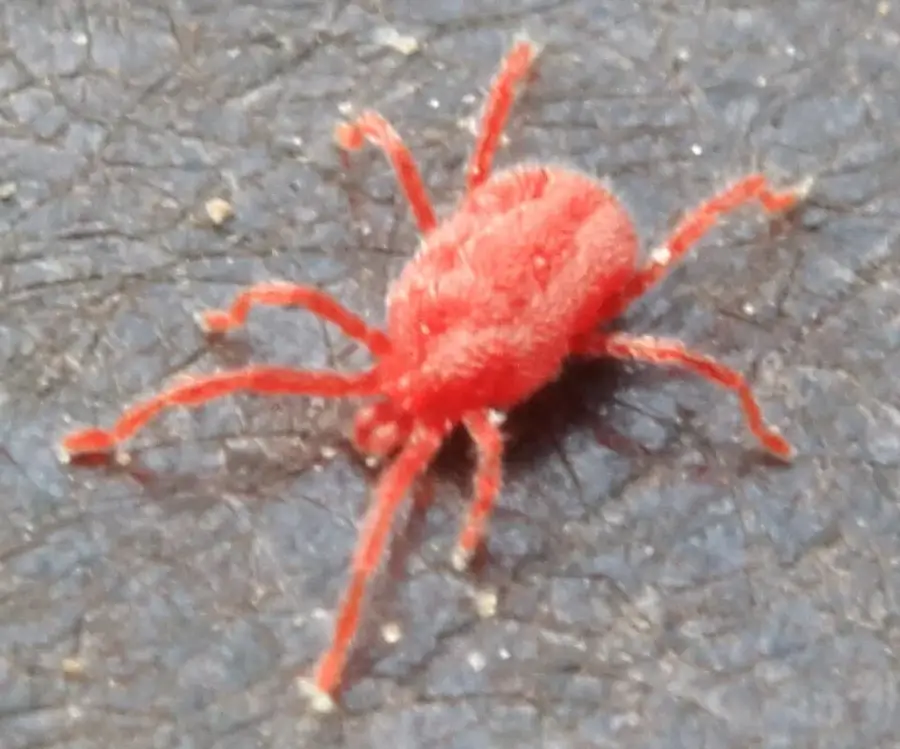

Clover mites (about 0.75 mm) are smaller and reddish-brown. Their front legs stretch like antennae. They prefer plants and enter homes in fall. Learn more on our Clover Mites page.
Chiggers: How These Larvae Differ From Concrete Mites
Chigger larvae are under 0.5 mm and bite humans. Concrete mites skip the parasitic larval stage, so they don’t bite people.
Spider Mites vs. Concrete Mites
Spider mites feed on plants and are under 1 mm. In contrast, concrete mites roam hard surfaces for tiny arthropods and pollen. For spider control, see How to Get Rid of Spiders: Easy Steps for Homeowners.
Life Cycle & Seasonal Phenology of Concrete Mites in the Mid-Atlantic
Four-Stage Development: Egg → Larva → Nymph → Adult
Concrete mites go through egg, larva, nymph, and adult stages. They can produce two or more generations each year.
Peak Activity Periods: Late April-June & September Surges
According to ACES Extension, mites peak in late spring (late April-early June) and again in September. Warm, dry days spark their activity.
Habitat & Distribution of Concrete Mites
Synanthropic Settings: Patios, Foundations & Stone Walls
They congregate on patios, sidewalk cracks, and stone walls, breeding in nearby leaf litter and mulch. (Source: BYGL)
Overwintering Sites & Migration Patterns
Mites lay eggs in soil and debris around foundations. In spring, they emerge and migrate onto sun-heated hardscapes.
Diet & Ecological Role of Concrete Mites
Concrete mites hunt small arthropods like springtails and insect eggs. Additionally, they feed on wind-blown pollen in early spring, making them garden helpers.
Beneficial vs. Nuisance: Evaluating Concrete Mite Impact
Concrete mites don’t harm structures, people, or pets. They aren’t disease carriers. However, crushed mites can leave red stains on masonry or clothes.
Monitoring Concrete Mite Infestation & Thresholds for Action
Check south- and west-facing hardscapes mid-morning on sunny days. Treat only when large groups disrupt activities or invade indoors.
Technician Insights: Observations from a Third-Generation Pest Control Pro
Field Anecdote: Spring & Fall Mite Spikes on DMV Patios
In spring and fall, I’ve seen patios turn bright red. Most homeowners worry, but a quick knock-down spray usually solves it.
Family Legacy: 50+ Years Serving VA/MD/DC
Our family business began in 1968. We’ve helped local homes spot the first mite surge and plan effective treatments.
Lessons Learned from Four Years as a Registered Technician
Basically, proper identification stops needless sprays. We treat only when needed to keep natural predators busy.
Integrated Pest Management (IPM) Strategies for Concrete Mites
A full IPM plan uses cultural, mechanical, biological, and chemical methods. It targets mites with minimal products.
Cultural & Habitat Modification
- Remove excess mulch and leaf litter next to foundations.
- Trim grass along sunny edges.
- Create an 18-24 inch gravel strip to block migrations (see OSU fact sheet).
Mechanical Controls & Exclusion Tactics
Use a strong hose spray to knock off mites. Vacuum indoor invaders and seal or discard the bag outside. Caulk gaps around doors and windows.
Biological Considerations
Because concrete mites prey on tiny pests, avoid broad-spectrum sprays. You’ll preserve these natural hunters and other helpful bugs.
Chemical Tools as a Last Resort
For big outbreaks, perimeter sprays with pyrethroid actives can suppress mites for 2-3 weeks. Always follow EPA-approved label instructions.
Treatment Options for Concrete Mites
DIY Knock-Down: Water Sprays & Vacuuming
A powerful garden hose spray clears visible mites. Vacuum inside, then seal or toss the bag outdoors. This is a fast, low-tech fix.
Professional Perimeter Sprays & Label-Driven Applications
Licensed technicians apply perimeter sprays to masonry and turf. We use EPA-approved products vetted by our research team.
Regulatory Considerations in VA, MD & DC
Maryland’s Pollinator Protection Act limits some insecticides. DC requires a Commercial Applicator license for exterior sprays. We stay up to date.
Common Homeowner Mistakes & Myths About Concrete Mites
Many think mites bite or damage concrete. They don’t. Red smears are mite pigments, not blood. And they drift in from plant litter, not cracks in stone.
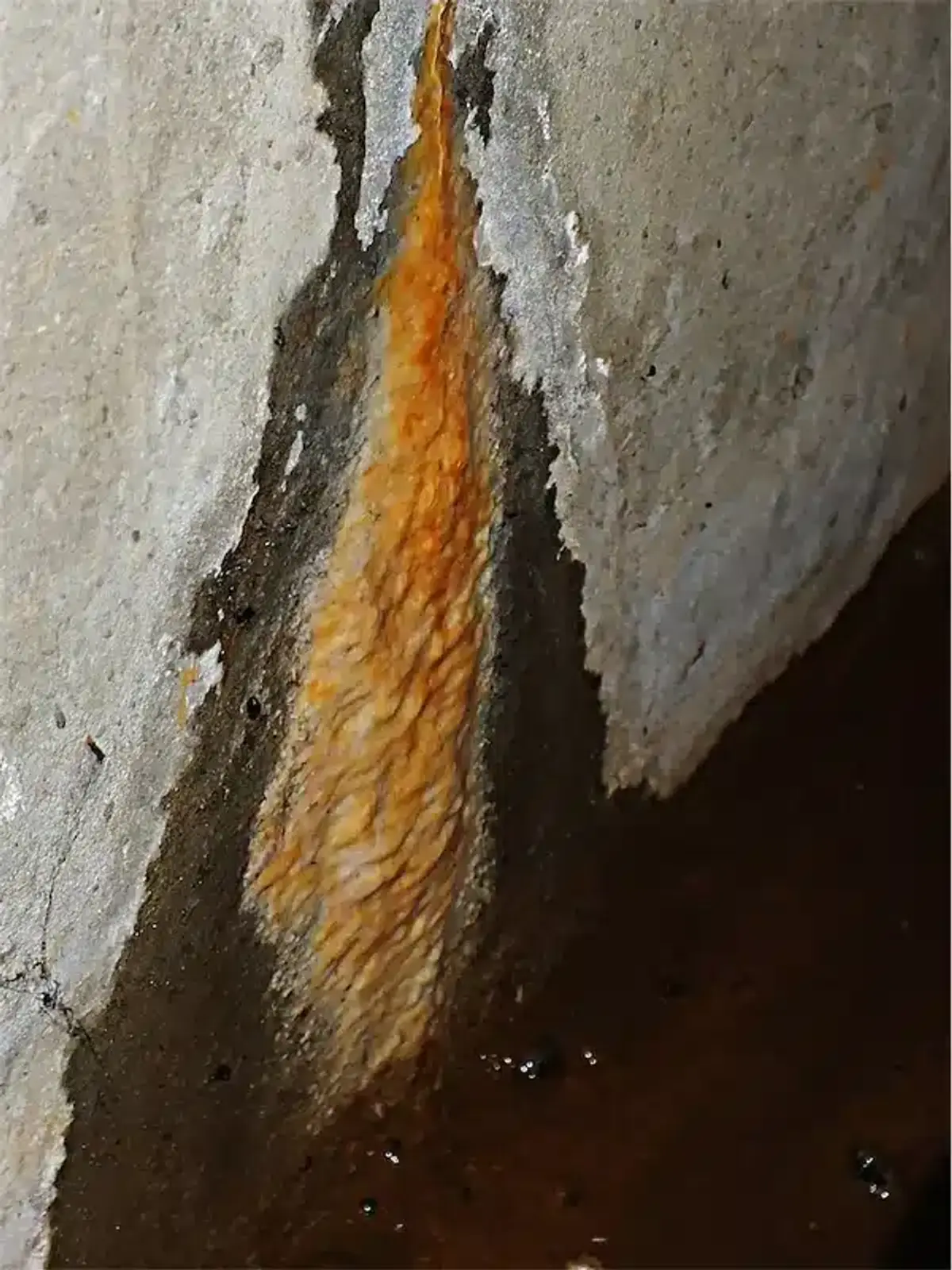

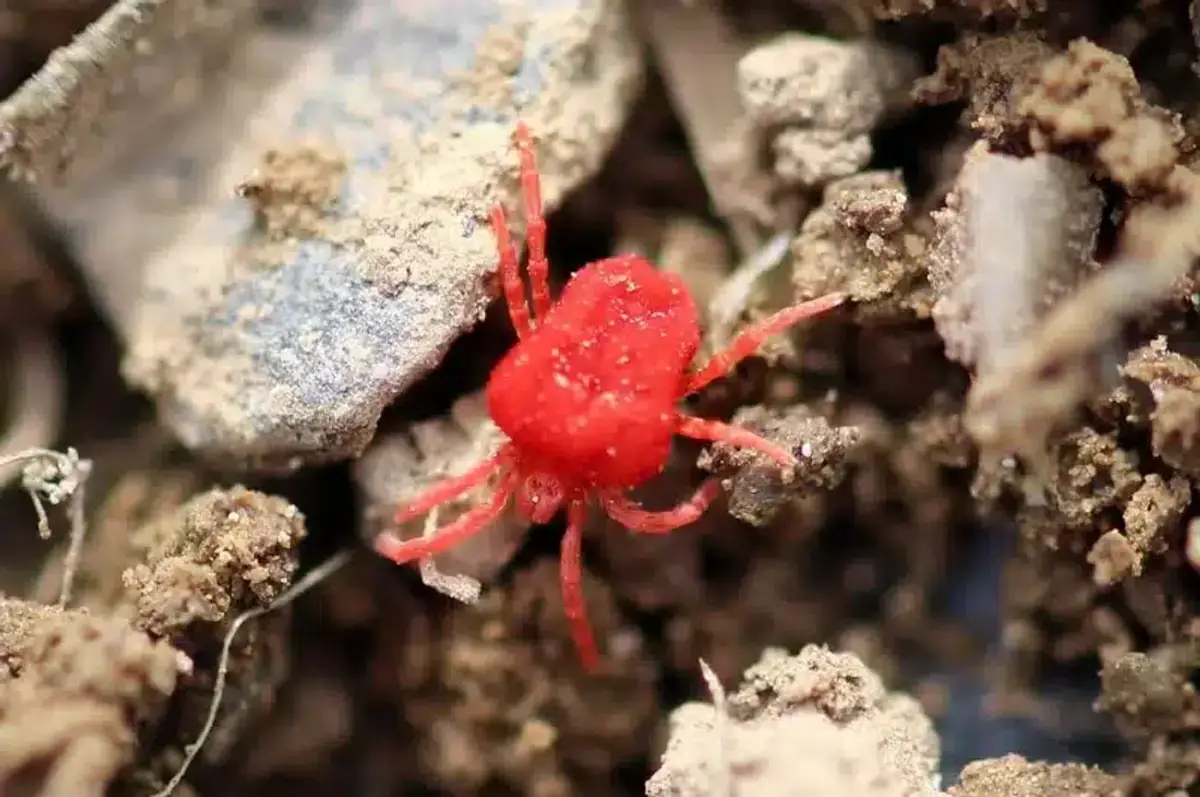
Frequently Asked Questions
Do concrete mites bite humans?
+
No, concrete mites don't bite people or pets. Their mouthparts can't pierce skin.
What causes concrete mites to congregate on patios?
+
Warm, dry days drive them to sun-heated hardscapes in search of prey and pollen.
How can I keep concrete mites from entering my home?
+
Limit leaf litter near foundations. Seal cracks and gaps around doors and windows before spring.
Are concrete mites harmful to patios or walls?
+
No, they don't damage masonry. Red stains come from mite pigments when crushed.
Do concrete mites offer any benefit?
+
Yes. They prey on small pests and eat pollen, helping control other tiny arthropods.
When should I seek professional help?
+
Call a licensed technician if large groups disrupt outdoor events or invade indoors in high numbers.
With five years of hands-on experience in the pest control industry, George Schulz is a registered technician with the Virginia Pest Management Association and a proud third-generation professional in a family business that's been protecting homes for over 57 years. He manages and trains a team of service pros while also leading internal research efforts—recently spearheading a deep-dive review of thousands of documents on pest control materials to hand-pick the most kid and pet friendly, most effective solutions tailored specifically for homes in the DC metro area.
